Expertise
Arrival, Ground and Departure Traffic Management
Expertise
Arrival, Ground and Departure Traffic Management
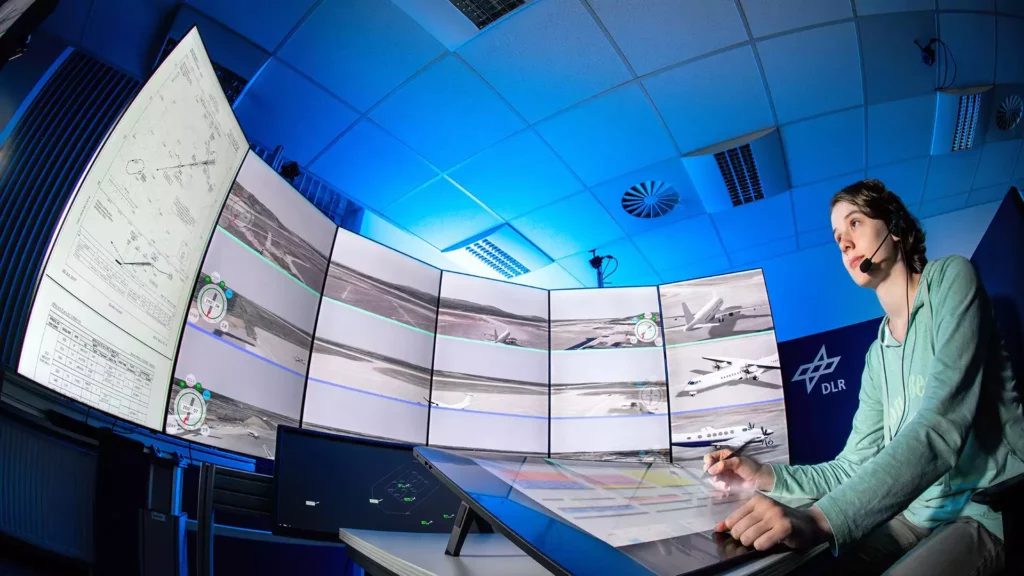
Even if the COVID-19 pandemic has hit the global aviation sector very hard the high-density airports will be staying the bottlenecks in the overall transport network in the future. Furthermore, the global aviation sector has to become more environmental friendly to still fulfil the expectation of the mobil people.
AT-One develops new and optimized procedures, supported by highly automated systems, to ensure the efficient use of existing infrastructure. Automation assists controllers to guide air and ground traffic in a time and location-based manner with adequate accuracy.
Key drivers for improvements are performance indicators such as safety, capacity, punctuality, aircraft noise reduction and carbon dioxide emissions, as well as the associated costs for fuel and noise protection measures.
DLR and NLR also work on innovative long-term research to provide answers for the problems of tomorrow. Examples are high to fully automated Air Traffic Management systems using artificial intelligence.
Airspace and En-Route Traffic Management
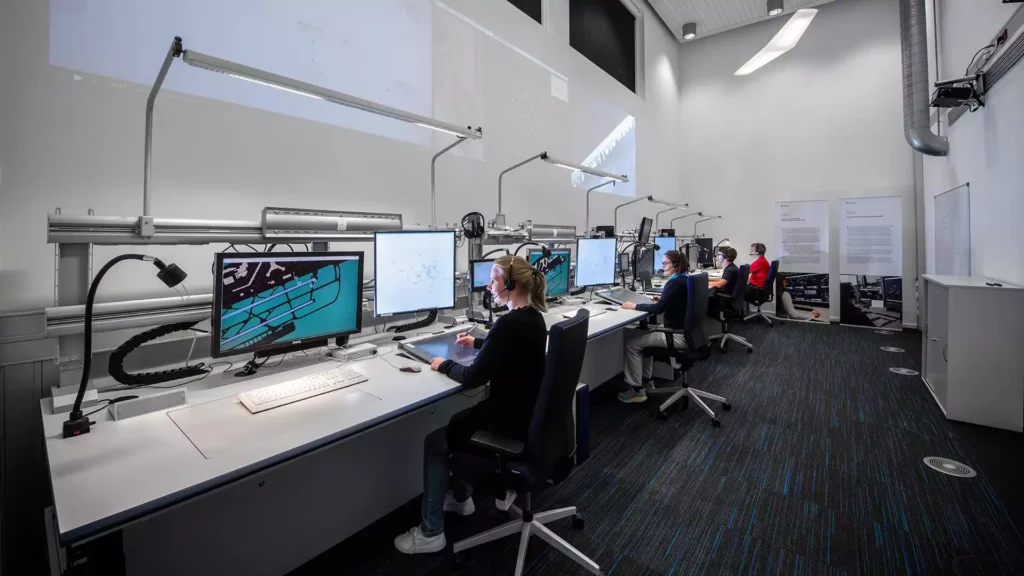
In 2004, the European Commission adopted the Single European Sky (SES) legislation to pave the way for the anticipated growth in air traffic. Major challenges are to increase the safety level in more crowded air space, reduce cost and make air traffic more environmentally friendly. Also, new types of aircraft, like unmanned aerial vehicles (UAV’s) will have to be accommodated. In order to modernise the European ATM system, the European Commission, together with Eurocontrol, launched the SESAR program. The AT-One partners, DLR and NLR, contribute to this program with research into flow management principles, airspace design and usage, ATC procedures and use of advanced tools and systems, both on the ground and in the aircraft. Key in the AT-One research is the holistic approach, meaning that all actors in the system like Airline Operational Centres, ATC Organisations and aircraft crew are considered to find optimal solutions.
Integrated Airport Processes
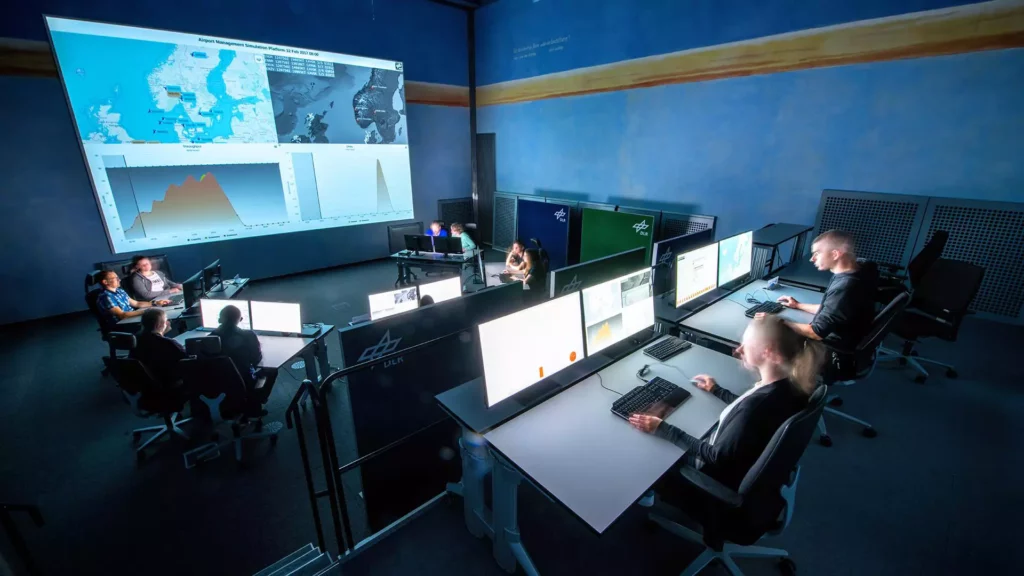
Airports are characterized by the fact that they are complex systems in which many different actors all play a vital role in the total airport operation. These include airport authorities, airlines, ATC providers, ground handling, security and many more. A smooth and efficient operation can only be achieved by a close cooperation of these different actors.
The AT-One partners research all airport processes and infrastructure that contribute to an efficient, safe and sustainable handling of aircraft, passengers and cargo. Key to their airport research and development is an integrated approach. This means that all involved processes, both landside and airside, and their interdependence are investigated. Basic activities include analysis, modelling and optimization of airport performance and utilization. On a practical level this results in decision support both on a strategic level, for example future investment plans or organizational improvements, and on an operational level, that is to say how to improve the daily operation.
Validation
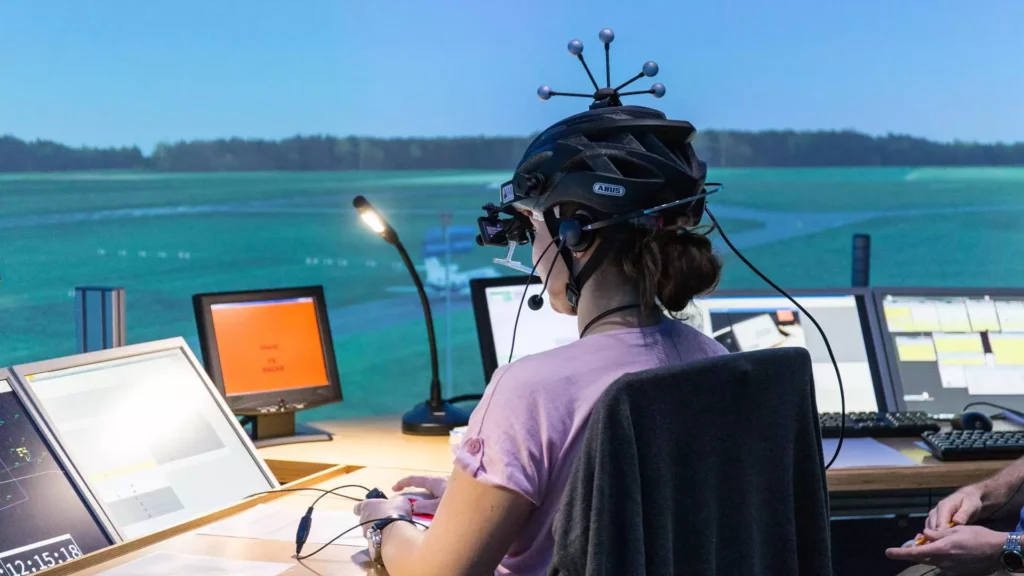
Developing concepts, procedures and tools is one thing, but putting them into operation is another. Many processes in air transport are safety critical and need involvement of different groups of actors. Another important factor is the adaptation of the people that have to work with the new procedures and tools. Validation plays a vital role in bringing developments into real operation. Moreover, defining the right validation strategy itself and performing them in such a way that they are a good representation of circumstances in real life is a science by itself.
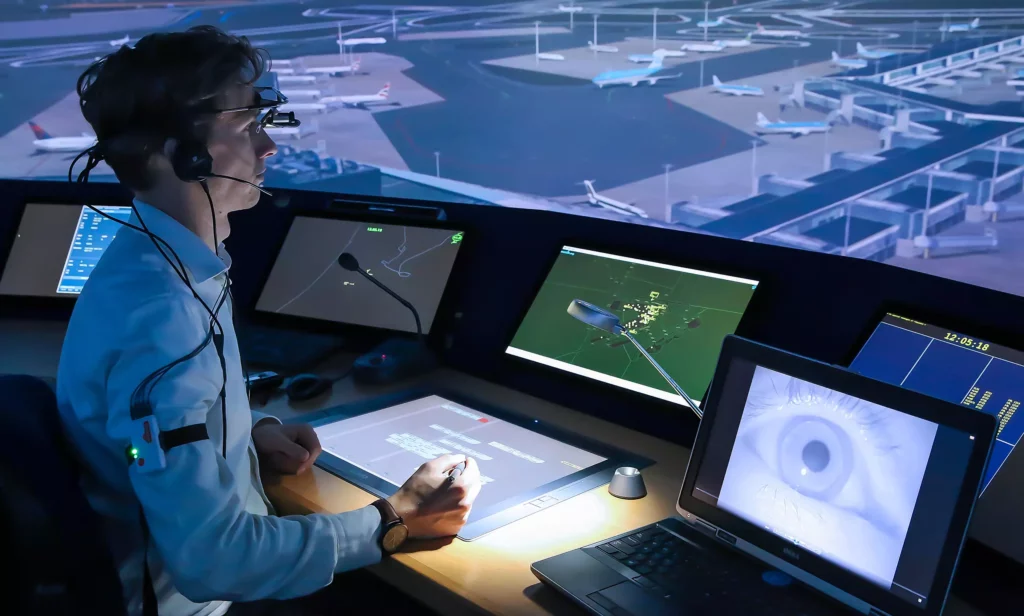
The AT-One partners have extensive knowledge and the corresponding infrastructure to validate concepts, procedures, technology and tools for operational use. These capabilities support many of the other activities within AT-One. DLR and NLR set up and perform validation experiments to demonstrate safety, feasibility, operational benefits and human interaction. Documenting and evaluating validation results form an integral part of the validation. This is done in accordance with existing ATM validation standards. Both partners also maintain a state-of-the-art validation infrastructure and keep it in line with future ATM developments.
Air-Ground Integration
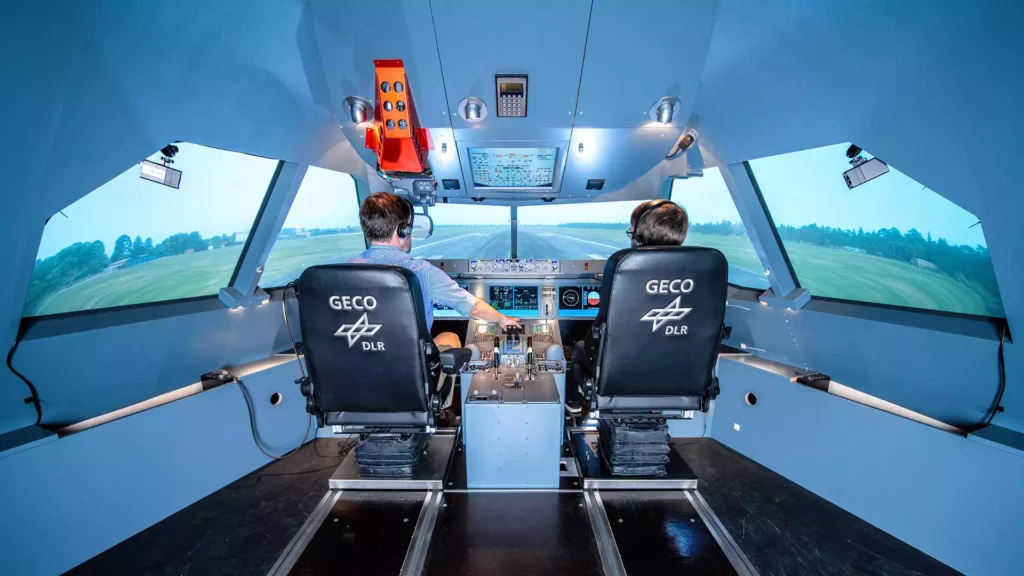
Strategic studies of the future air transport system like the European “Vision 2020” have clearly indicated that there is a need to further integrate airborne and ground functions in order to cope with the increasing requirements regarding safety and capacity. The current air traffic operations are based on the principle that more or less the same level of service is provided to any aircraft regardless of its capabilities and equipment. Development and integration of new systems and functions into the aircraft will therefore not directly result into a more efficient air transport system. In order to provide a response to the present airport capacity and future environmental constraints, additional procedures and operational concepts as well as technology and systems need to be developed and implemented. This must be done wherever required. Major benefits can be expected especially in areas with high density of traffic like the TMA. Based on the exchange of information between aircraft and ATC via data link, trajectory-based traffic management could consider user preferred trajectories. It could also be used for more accurate predication of aircraft movements.
The AT-One partners research and develop new concepts, procedures and tools related to the integration of airborne and ground ATM systems. The aim is to benefit from new enabling technologies that further integrate ground and airborne functions. Also new airborne functions and decision support tools for air ground co-operative ATM are being developed. These activities contribute to the development and implementation towards a time based (trajectory based) ATM with shared responsibilities between air and ground for separation and 4D guidance. This will include higher automation and new communication, navigation and surveillance functions.
4D trajectories, that describe precisely aircraft’s position over time, allow a strategic planning of each phase of flight. Potential conflicts can be detected well in advanced and consequently be avoided in an efficient manner. Data link communication with ATC as well as with other aircraft will provide the pilots with a comprehensive awareness of the traffic situation. This will enable them to perform delegated spacing and separation tasks and to ensure better adherence to ATC separation minima in en-route, terminal, and approach airspace.
Air Transport Safety and Security
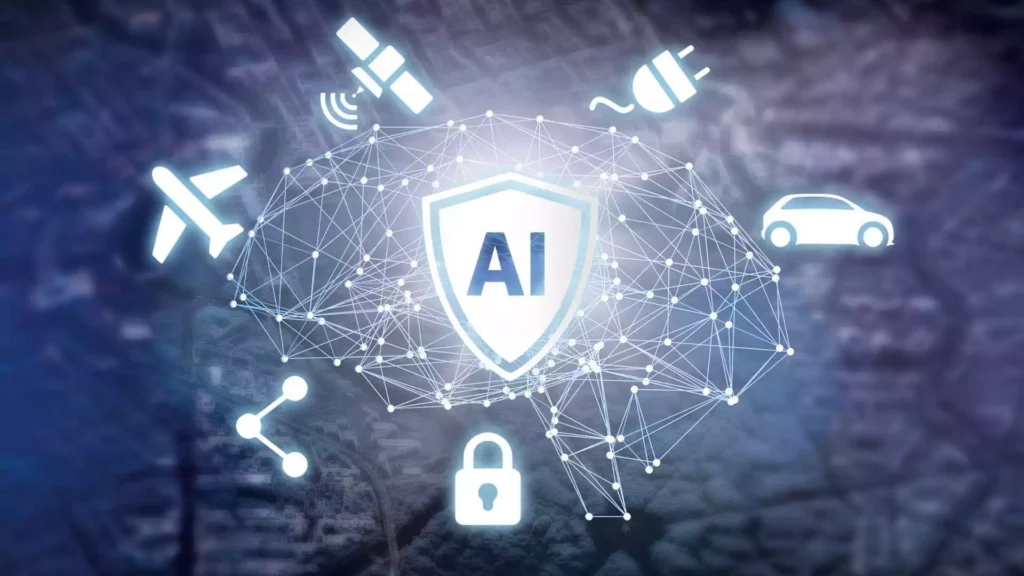
Maintaining and increasing the level of safety has always been an important focus in air transport. This has resulted in the high air safety standards as we know today. Nevertheless, improvements are still necessary and this drive is even reinforced by the projected growth in air travel. Another important challenge is to make air transport more robust to increase the security in the whole air transport system for the safety of both passengers and people on the ground. Driven by the growing increase in intended disruptions of air transport and the growing dependability on IT, the AT-One partners engage more and more in delivering solutions to improve security in air transport. The activities of DLR and NLR in this domain are very broad, ranging from safety modelling and assessment to incident and accident investigation. At the top-level advanced safety models and methods are developed. On a more operational level, activities include safety analyses, assessments and incident and accident investigations. Furthermore, safety expertise is also used to design and build tools for safety assessments and safety decision support. The knowledge from this area of expertise is also used to support the activities in the other areas of expertise. An important asset is the extensive incident and accident database that is built and maintained.
4D trajectories, that describe precisely aircraft’s position over time, allow a strategic planning of each phase of flight. Potential conflicts can be detected well in advanced and consequently be avoided in an efficient manner. Data link communication with ATC as well as with other aircraft will provide the pilots with a comprehensive awareness of the traffic situation. This will enable them to perform delegated spacing and separation tasks and to ensure better adherence to ATC separation minima in en-route, terminal, and approach airspace.
Environment and Policy Support
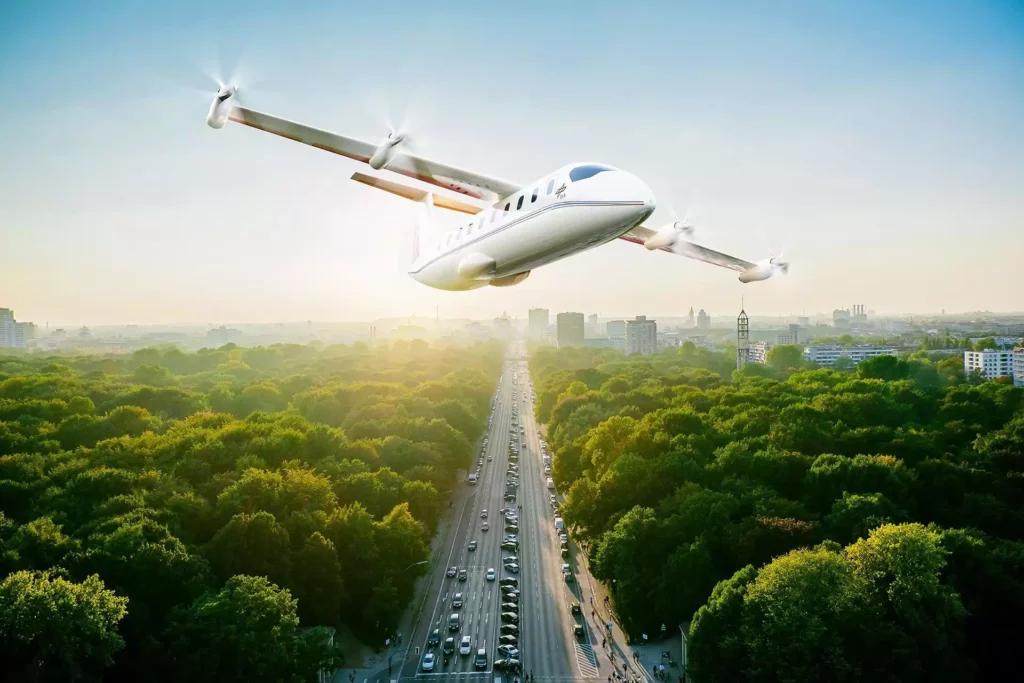
Environmental concerns are a serious factor for air traffic. This is especially true in close vicinity of airports where noise is an issue of much debate but also on a global scale where emissions of substances like CO2 and NOx are a major concern. These concerns will become even bigger when air travel grows as expected. A lot of effort is spent on reduction of emissions and noise production of aircraft. But optimizing operational procedures can also contribute significantly to reduce the environmental impact.
The AT-One partners research the environmental impact of air transport in multiple areas, this includes noise and nuisance, emissions and third-party risk. Their basic activities in this field are the development of measuring techniques, models and tools to assess and predict environmental impact of aircraft operations. Furthermore, new concepts and procedures to optimize flight profiles with the goal to reduce environmental impact are developed and tested. Another important field of work is the supply of independent and objective information to the public and policy makers about actual and expected future noise and emission levels.
Human Factors and Training
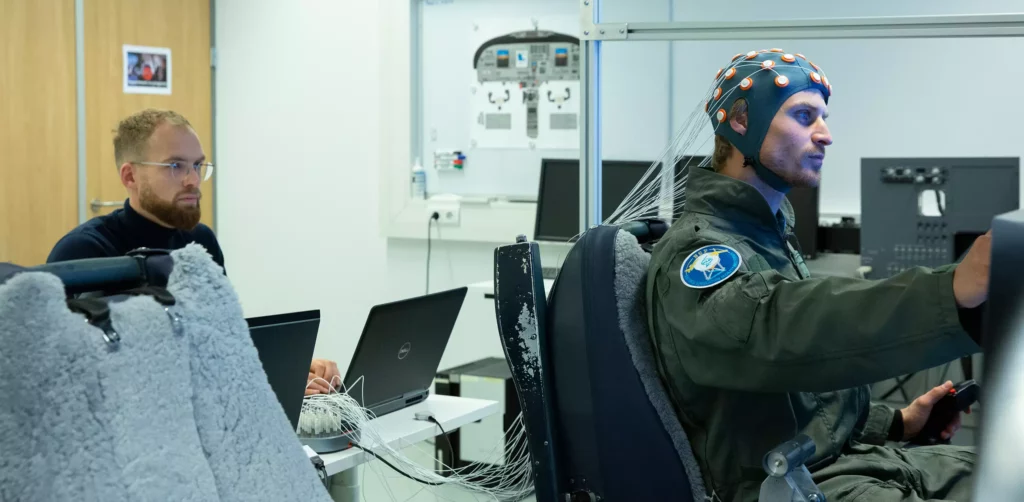
The operation and maintenance of modern aircraft including air traffic management and control are tasks to be accomplished in an advanced technological environment with support of highly automated systems. This poses different challenges like assuring adequate and reliable human performance levels while routinely operating the aviation system or creating resilience (adaptivity) in the overall system to meet unexpected demands, disturbances, deviations and non-nominal conditions. Handling the operators’ smooth transition from one system to a new system is another challenging area.
The AT-One partners work on knowledge, methodologies and facilities to enhance the integration of human operators into complex systems. Typical activities in this field are the application and acquisition of empirical knowledge and expertise on human performance capabilities and limitations to increase system performance and its endurance. DLR and NLR measure human performances and efforts, model human work environments and design aviation equipment, based on the human factors. Both partners also research training and selection processes in order to increase the overall operability and safety of aviation related systems and technologies.



